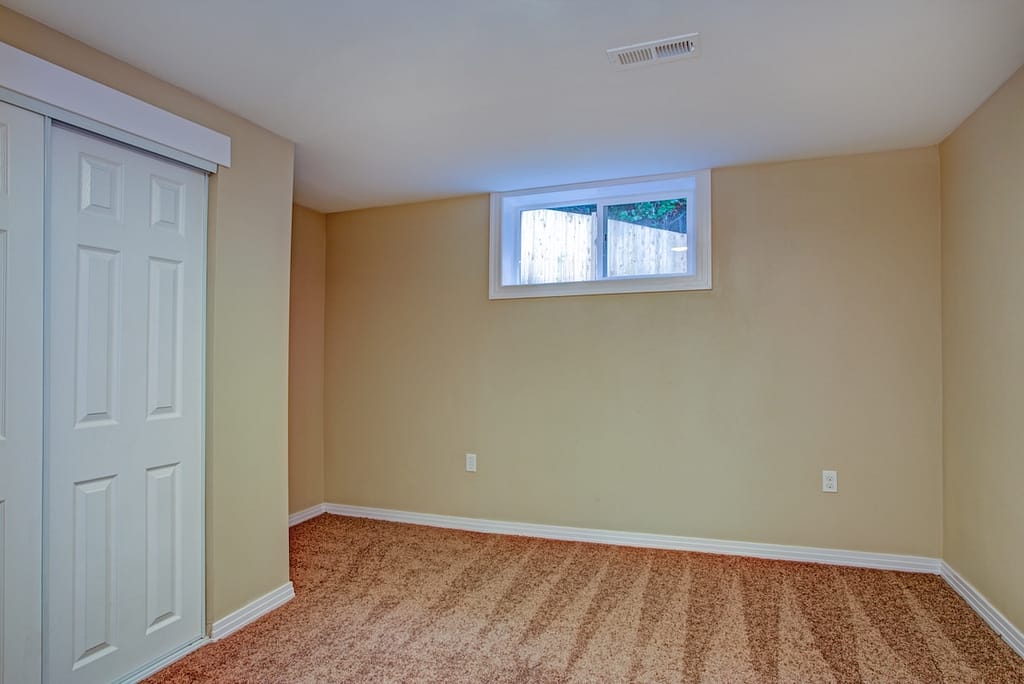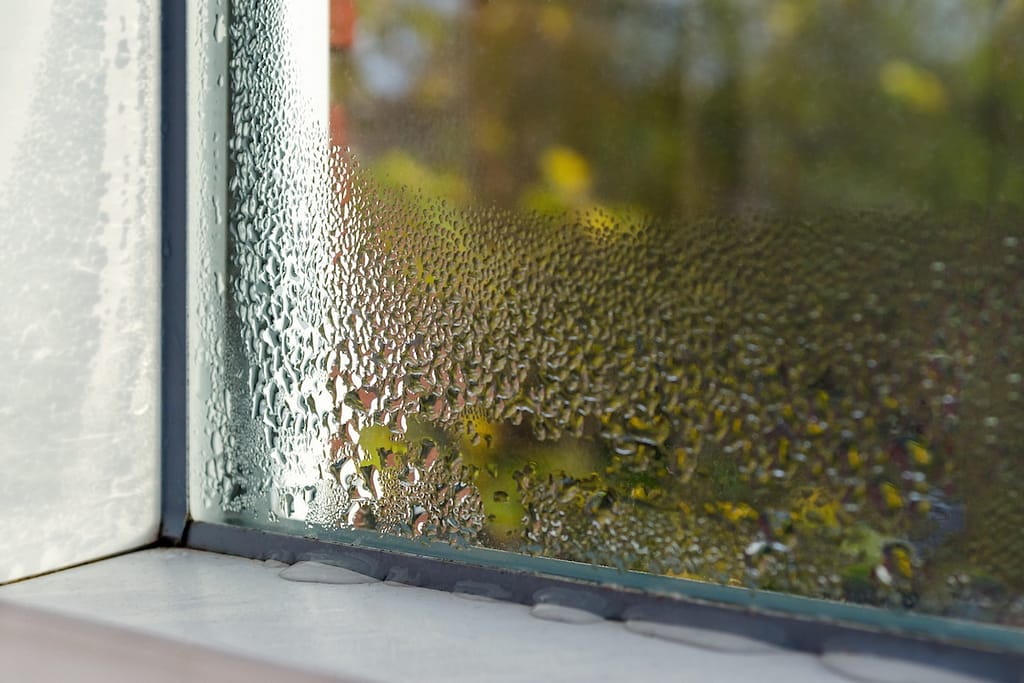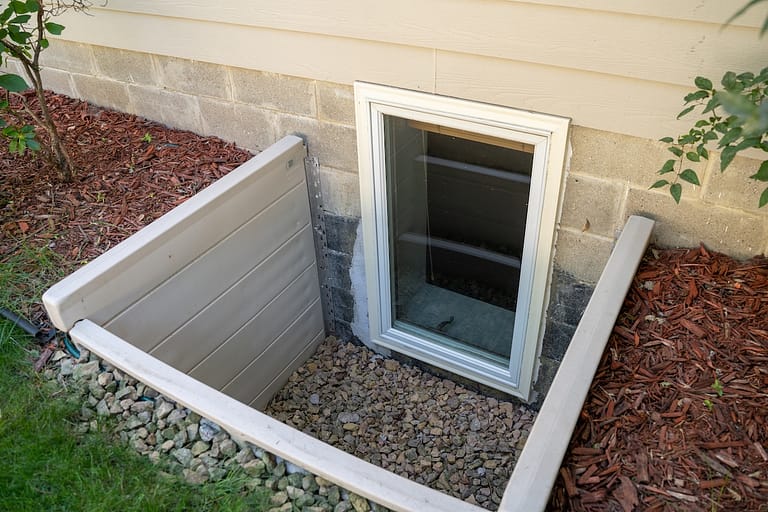A basement window leaking is more than an inconvenience — it’s a potential hazard that can damage your foundation, encourage mold growth, and compromise your home’s comfort. Because basements sit below ground level, even a small leak can quickly escalate into costly repairs. Whether you’ve noticed damp carpet, condensation on the panes, or water trickling down the wall, knowing what to do next can protect your investment. The good news is that today’s modern replacement windows are designed to handle these challenges, offering better sealing, drainage, and energy efficiency than ever before.
In this guide, you’ll learn:
- Why basement window leaks demand quick attention
- Seven clear steps for inspecting and resolving the issue
- Key factors that make basements vulnerable to leaks
- Preventive strategies to keep water out long-term
- When to handle repairs yourself and when to call a pro
💧 Why Addressing Basement Window Leaks Matters

Basement windows are uniquely vulnerable because of their position below or near the soil line. When they fail, the damage often goes unnoticed until it becomes a larger issue. Tackling the problem quickly brings several benefits.
- Protects Structural Integrity: Prevents water from weakening concrete, mortar joints, or framing near the window.
- Reduces Mold and Mildew Risk: Moisture in basements creates an ideal environment for spores that affect air quality.
- Improves Energy Efficiency: Properly sealed windows stop drafts and reduce heating and cooling costs.
- Protects Belongings: Finished basements or storage areas stay dry and safe from water damage.
- Boosts Home Value: Well-maintained windows reflect care and upkeep, something buyers always notice.
🛠️ 7 Steps to Inspect and Address Basement Window Leaks
Before you can fix the issue, you need to understand where the leak originates. These seven steps walk you through inspection, diagnosis, and action.
1. Look for Visible Water Trails
Start by checking the interior wall below and around the window. Water stains, bubbling paint, or streaks running downward indicate water intrusion.
- Use a flashlight to inspect corners closely
- Don’t forget to check exterior siding or masonry
2. Inspect the Window Frame
Leaks often start with the frame itself. Wood can rot, vinyl can warp, and aluminum can corrode over time.
- Look for soft spots in wood
- Check for gaps between frame and wall
- Examine caulking for cracks or peeling
3. Examine Window Wells
Many basement windows have wells that can collect water if not drained properly. If the well fills during rainfall, hydrostatic pressure can push water into your basement.
- Make sure the well has a functional drain at the bottom
- Clear debris like leaves, mulch, or soil buildup
- Consider adding a well cover to block rain directly
4. Check Exterior Grading and Drainage
Sometimes, the leak isn’t about the window itself but the way water flows around your home.
- Soil should slope away from the foundation
- Downspouts should extend 4–6 feet from walls
- Avoid heavy landscaping that traps water near windows
5. Test the Seal and Weatherstripping

A compromised seal allows water and air to pass freely.
- Run your hand around the window on a windy day to feel for drafts
- Spray a gentle stream of water with a hose outside and check for seepage
- Replace cracked or brittle weatherstripping
6. Identify Condensation vs. True Leaks
Sometimes moisture comes from inside your basement due to humidity rather than outside water.
- Condensation usually beads evenly on glass surfaces
- Leaks often show as streaks, puddles, or damp drywall
- A dehumidifier can solve condensation, but leaks need structural attention
7. Decide on Repair or Replacement
After identifying the source, decide whether a repair will suffice or if replacement is smarter.
- Repairs: Small caulking jobs, resealing, or adjusting drainage
- Replacements: Warped frames, extensive rot, or recurring leaks despite patching
🧾 Homeowner Checklist for Leak Prevention
Prevention is often simpler and more affordable than repair. Following a seasonal routine helps you catch issues early and avoid costly water damage.
- Spring: Inspect caulking and reseal as needed after winter weather.
- Summer: Check window wells after heavy rainstorms for proper drainage.
- Fall: Clear gutters and downspouts to keep water moving away from your foundation.
- Winter: Watch for ice buildup near wells or along window edges.
Regular attention also extends the lifespan of your windows and ensures your basement stays dry year-round.
🔍 Signs It’s Time to Call a Professional
While some basement leaks are manageable with DIY fixes, others demand professional expertise. Knowing when to seek help can save you from costly damage.
Severe Structural Damage
- Large cracks in basement walls around windows
- Window frames pulling away from masonry
Recurring Leaks
If you’ve already sealed or repaired the area and the leak persists, the issue likely lies deeper with the foundation or drainage system.
Finished Basement Concerns
If your basement includes drywall, flooring, or furniture, even small leaks can lead to big repair bills. Professional replacement provides peace of mind.
Efficiency Upgrades
Sometimes, the best fix is installing modern windows with advanced seals, insulated glass, and integrated drainage systems. Not only do they stop leaks, they also improve comfort and reduce energy bills.
🧰 Repair Options vs. Replacement Options

When facing a leaking basement window, homeowners often weigh short-term repairs against full replacements. Here’s a quick breakdown:
| Option | Best For | Pros | Cons |
| Re-Caulking | Small gaps, early leaks | Affordable, quick fix | Temporary, may need repeating |
| Window Well Drainage | Flooded wells | Prevents future pooling, low cost | Requires regular clearing |
| Weatherstripping | Drafts, light leaks | Easy DIY project, improves comfort | Limited effect on major leaks |
| Full Replacement | Rot, warped frames, repeated issues | Long-term solution, energy efficient, boosts value | Higher upfront cost |
Most homeowners find that while minor repairs buy time, replacement ensures a lasting fix and eliminates the cycle of patching leaks.
✅ Protect Your Basement Investment
Basement window leaking problems are often underestimated, but they have the power to compromise your home’s health, safety, and efficiency. By inspecting systematically, addressing causes early, and upgrading when necessary, you ensure your basement remains dry and comfortable. If you’re ready to explore options for replacement or need expert help diagnosing a stubborn leak, don’t wait until the problem worsens — contact us today to schedule a consultation with trusted professionals.







